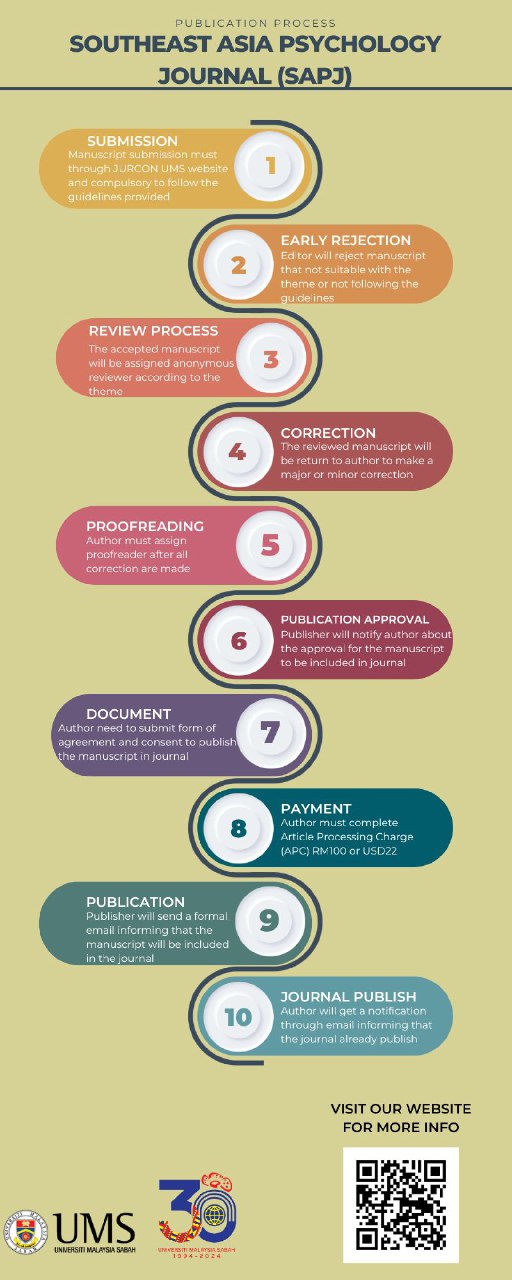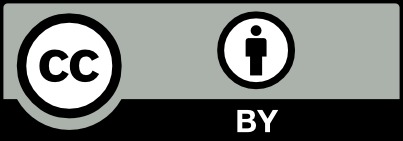AN ANALYSIS OF ADOLESCENTS’ CURIOSITY AND STRENGTHS USE DURING THE COVID-19 PANDEMIC
DOI:
https://doi.org/10.51200/sapj.v9i2.5080Keywords:
Adolescents, Curiosity, Strengths UseAbstract
Students in the adolescent stage experience a plethora of challenges as they transition from childhood to adulthood. Among students, these challenges are compounded by the abrupt shift to online classes due to the COVID-19 pandemic. There may be undesirable behavioral and social outcomes in adolescence, but it cannot be merely assumed that these outcomes raise threats; several aspects seen as challenging may turn out to stimulate positive progress. Like other positive psychology studies, this undertaking sought to appreciate the optimistic and emotionally gratifying aspects of human behavior and experiences. It describes the curiosity and strengths used by adolescents that contribute to their life, and provides information on the examined relationship between the components of curiosity (exploration and absorption) and strengths used, as well as the possible differences of the responses when grouped based on sex, grade level, academic performance, and membership in organizations. Findings showed that most adolescents use their strengths 70 percent to 80 percent of the time, albeit to a low degree. They also have a fairly large amount of motivation to seek and experience new knowledge and experiences. Furthermore, curiosity and exploration, as well as strengths use, significantly differ between adolescents in the secondary level and those in the tertiary level of education. Curiosity and strengths use do not differ in terms of sex, academic performance, and participation in co-curricular activities. More so, a significant positive relationship between curiosity and strength use was found.
References
Abakpa, B., Abah, J. & Agbo-Egwu, A. (2018). Science curiosity as a correlate of academic performance in mathematics education: Insights from Nigerian higher education. African Journal of Teacher Education (AJOTE). 7. 36-52. Available at https://hal.archives-ouvertes.fr/hal-01700334/document
APA (2002). Developing adolescents: A reference for professionals. Washington, DC: American Psychological Society.
Casey, B. J., Duhoux, S., & Malter Cohen, M. (2010). Adolescence: what do transmission, transition, and translation have to do with it? Neuron, 67(5), 749–760. (2010) Available at https://doi.org/10.1016/j.neuron.2010.08.033
Curtis, Alexa C. (2015). Defining adolescence. Journal of Adolescent and Family Health: 7(2). Available at https://scholar.utc.edu/jafh/vol7/iss2/2
Danjunaite, I., Kuneviciene, I., Thoresen, S., Zelviene, P., and Kazlauskas, E. (2021). Adolescents amid the COVID-19 pandemic: A prospective study of psychological functioning. Child and Adolescent Psychiatry and Mental Health, 15 (45). Available at https://capmh.biomedcentral.com/articles/10.1186/s13034-021-00397-z
Fegert, J.M., Vitiello, B., Plener, P.L., & Clemens V. (2020). Challenges and burden of the Coronavirus 2019 (COVID-19) pandemic for child and adolescent mental health: A narrative review to highlight clinical and research needs in the acute phase and the long return to normality. Child and Adolescent Psychiatry and Mental Health, 14(1):1–11. https://doi.org/10.1186/s13034-020-00329-3.
Freeman, S., Eddy, S., McDonough, M., Smith, M., Okoroafor, N., Jordt, H., & Wenderoth, M. (2014). Active learning increases student performance in science, engineering, and mathematics. PNAS 2014. Available from https://psycnet.apa.org/record/2014-27762-001
Goldberg S., Gibbs A., Martinez-Caro aguado, a., and munoz m. (2015). enhancement of Memory Through Curiosity-Driven Learning. Lake Forest College News. Available at https://bit.ly/3FCE9aa
Govindji, R. & Linley, P.A. (2007). Strengths use and self-concordance and wellbeing; implications of strengths coaching and coaching psychologists. International Coaching Psychology Review, 2(2), 143-153. Available at https://bit.ly/3CUypqh
Green, S. & Palmer, S. (2018). Positive psychology coaching in practice. Available at https://bit.ly/3FJGpMF
Gurning, B., & Siregar, A. (2017). The effect of teaching strategies and curiosity on students’ achievement in reading comprehension, english language teaching. Canadian Center of Science and Education 191 Vol. 10, No. 11; https://files.eric.ed.gov/fulltext/EJ1158561.pdf
Hays, C., (2018). Curiosity and Gifted Identification: A Mixed Methods Study https://digitalcommons.du.edu/cgi/viewcontent.cgi?article=2435&context=etd
Jach, H.K., Sun, J., Loton, D. (2018). Strengths and subjective wellbeing in adolescence: strength-based parenting and the moderating effect of mindset. J Happiness Stud 19, 567–586. https://doi.org/10.1007/s10902-016-9841-y
Jaen, M.C., & Baccay, E.S. (2016). Curiosity, Motivation, Attitude, Gender, and Mathematics Performance. The Normal Lights. Available at https://bit.ly/2ZkIU8K
Jarden, A. (2011). Positive Psychological Assessment: A Practical Introduction to Empirically Validated Research Tools for Measuring Well Being. Available at https://bit.ly/3DVr1fN
Kashdan, T., Rose, P., & Fincham, F. (2004). Curiosity and exploration: Facilitating positive subjective experiences and personal growth opportunities. Journal of Personality Assessment. 82. 291-305. Available at https://bit.ly/3CNT7Z1
Kashdan, T.B., Gallagher, M.W., Silvia, P., Breen W.E., Terhar, D., & Steger, M.F. (2009). The curiosity and exploration inventory-ii: development, factor structure, and initial psychometrics. Journal of Research and Personality, 43, 987-998 (2009) Available at https://psycnet.apa.org/record/2009-20059-003
Litman, J., Robinson, O., & Demetre, J. (2016). Intrapersonal curiosity: Inquisitiveness about the inner self. Self and Identity, 16, 1-20. Available at https://bit.ly/3l6z1mU
Mohanty, A., Rabindra, P., & Lalatendu, J. (2015). Curiosity and meaning of life leading towards personal growth: the role of emotional intelligence. Available at https://bit.ly/3oX90aE
Noronha, A.P. & Dametto, D. (2016). Associations between character strengths and life satisfaction: A study with college students. Acta Colombiana de Psicologia. Available at https://bit.ly/3cLQRqB
Pluck, G. & Johnson, H. (2011). Stimulating curiosity to enhance learning. GESJ: Education Sciences and Psychology. (2011). 24-31. Available at https://bit.ly/3nMFkOe
Slivinske, J. (2014). Identifying unexpected strengths in adolescents. Academic Insights for the Thinking World. Oxford University Press.
Steinberg, L. (2014). Age of opportunity: Lessons from the new science of adolescence. Houghton Mifflin Harcourt.
Tome, G., de Matos, M.G., Simoes, C., Camacho, I., & Diniz, J.A. (2012). How can peer group influence the behavior of adolescents: Explanatory model. Global Journal of Health Science, 4 (2):26-35. Available at https://www.ncbi.nlm.nih.gov/pmc/articles/PMC4777050/.
Valerio, K., (2012). Intrinsic motivation in the classroom. Journal of Student Engagement: Education Matters, 2(1), 30-35. https://ro.uow.edu.au/jseem/vol2/iss1/6
VIA Institute of Character. (2021). Character strengths and wellbeing /happiness. Available at https://bit.ly/3oVAIoo Vigeant, M., Prince, M. J., Nottis, K. E. K., & Golightly, A. F. (2018). Curious about student curiosity: Implications of pedagogical approach for students’ mindset. ASEE Annual Conference & Exposition, Salt Lake City, Utah. 10.18260/1-2--30245. https://peer.asee.org/30245
Wood, A., Linley, P., Maltby, J., Kashdan, T., Hurling, R., (2010). Using personal and psychological strengths leads to increases in well-being over time: A longitudinal study and the development of the Strengths Use Questionnaire. Personality and Individual Differences. Available at https://bit.ly/3FPuNbh








